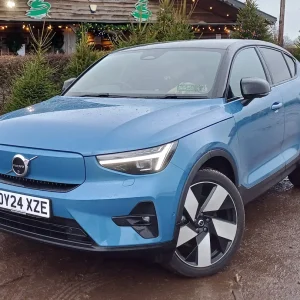This a big step for Jaguar, its first off-roader, and the car that will become its biggest seller worldwide, though in the UK the compact executive XE will still outsell it due to that sector’s importance here.
But even in the UK, the F-pace will sit at the same volume level as the XF executive saloon, with 40% heading into the fleet sector thanks to emissions that start at 129g/km for the 180hp 2.0-litre diesel rear-wheel drive manual model, going up by 5g/km each with the auto gearbox and four-wheel drive.
The 180hp diesel, Jaguar’s new Ingenium engine built at its Wolverhampton plant and already in the XE and XF – as well as the Land Rover Evoque and Discovery Sport – will be the most popular unit, with 3.0-litre petrol (209g/km) and diesel (159g/km) models completing the line-up.
It’s a relief to find refinement of the 180hp diesel is much better in the F-pace than in the XE in particular, where it is one of the car’s big weaknesses. Only under extreme duress does it become coarse, and though the 300hp 3.0-litre diesel is a monster of an engine by comparison, and very very rapid, the smaller unit certainly doesn’t disgrace itself.
Jaguar is aiming at the most sporty of these crossover SUVs from a dynamic perspective, which means the Porsche Macan for the larger engines and the BMW X3 and X4 with the more popular lower-powered diesel. Largely the Jag achieves its goals, being a handy steer on twisty roads, with good body control and a firm ride that isn’t uncompromisingly harsh.
The Porsche maybe still has the edge, but it’s close enough to be commendable for the Jaguar, which is also a larger and more practical vehicle. The four-wheel drive system automatically shifts up to 90% of power to the front or rear wheels according to perceived requirement.
Class-leading boot space by some distance, including a full one-metre load area width, is joined by rear space that is comfortable for adults in leg- and head-room terms, and Jaguar claims class-best rear seat width. Cabin storage up-front matches rivals without being overly plentiful, while the company’s in-house developed InControl system combines infotainment features with apps, and navigation comes through a 12.3-inch display or onto the configurable dashboard.
As an all-round package, the F-pace is very impressive, especially as the brand’s first SUV, though a lot of sister brand Land Rover’s know-how has obviously been employed, especially with the clever off-road systems. But that’s nothing compared to how impressive the whole life costs are.
Scarcely believable residuals of over 50% where rivals are no better than 46.7% make the difference and more than make up for the F-pace’s higher P11D price compared to any rival.
Jaguar’s new model is good looking – except maybe side-on where the sheer bluff nose is eye-catching, though not necessarily in a good way – and it manages to combine astounding residuals with a suite of running costs and efficiency that are in the same region as its rivals, to come out with a cost per mile figure beaten only by the Mercedes GLC220 Sport.
Jaguar is optimistic about continuing its recent strong growth curve, and the F-pace is more than equipped to make a mark.
Jaguar F-pace 2.0d 180 R-sport |
|
| Model price range | £34,170-£51,450 |
| Residual value | 50.2% |
| Depreciation | £20,015 |
| Fuel | £5120 |
| SMR | £3343 |
| VED | £390 |
| National Insurance | £4490 |
| Cost per mile | 71.6p |
| Fuel consumption | 53.9mpg |
| CO2 (tax) | 139g/km (27%) |
| BIK 20/40% per month | £181/£361 |
| Warranty | 3 yrs/unlimited mls |
| Boot space | 650 litres |
| Engine size/power | 1999cc/180hp |





